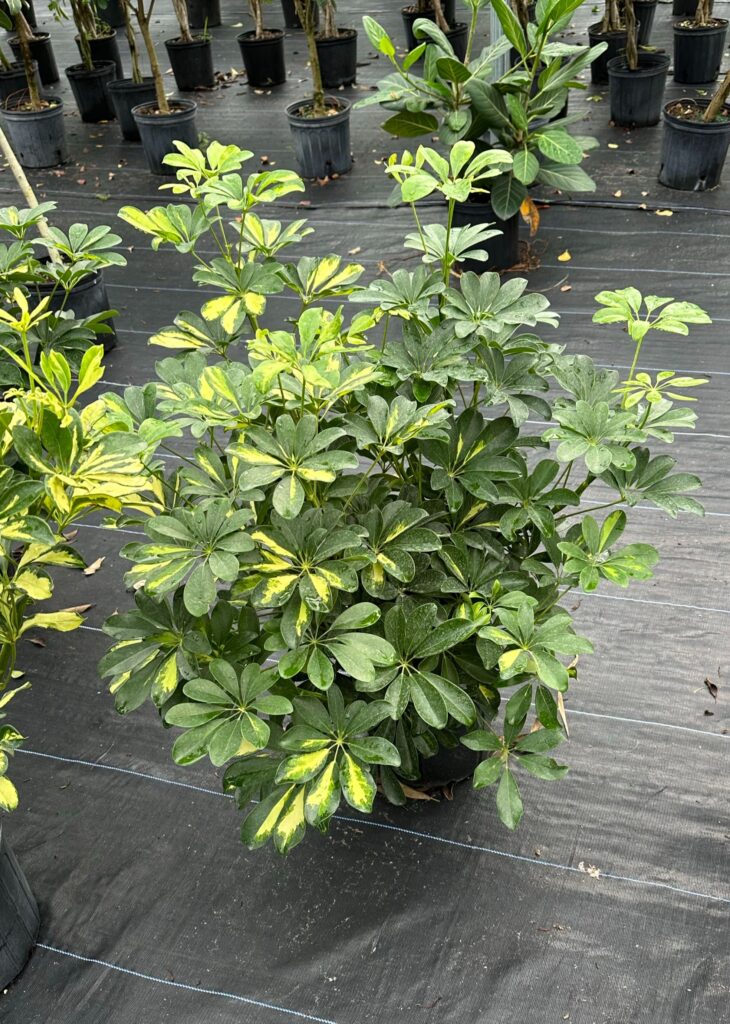
Capella arboricola, commonly known as the Tree Capella, is a type of small to medium-sized evergreen shrub or tree native to tropical and subtropical regions. It’s known for its ornamental qualities, including attractive foliage and sometimes vibrant flowers. We offer Capella Arboricola Bushes in 4″, 6″, 8″, and 10″. Capella Arboricola Braids are available in 10″ and 14″.
Key features of Capella arboricola include:
Flowers: When it flowers, Capella arboricola produces small, often inconspicuous blooms that can add subtle beauty to the plant.
Foliage: The leaves are typically glossy and can vary in shape depending on the specific variety, but they often provide a lush, green appearance year-round.
Light: Capella arboricola thrives in bright, indirect light. It can tolerate some direct sunlight, but too much can scorch the leaves. If grown indoors, place it near a window with filtered light. For outdoor plants, choose a location that offers partial shade or dappled sunlight.
Soil: Use well-draining soil to prevent waterlogging, which can lead to root rot. A mix of peat, pine bark, and perlite or sand works well. Aim for a slightly acidic to neutral soil pH (around 6.0 to 7.0).
Watering: Water the plant regularly to keep the soil consistently moist but not soggy. Allow the top inch of soil to dry out between waterings.
Humidity: Capella arboricola enjoys higher humidity levels. If you’re growing it indoors, consider using a humidifier or placing a tray of water near the plant.
Temperature: Maintain a temperature range between 60°F to 75°F. Avoid exposing the plant to temperatures below 50°F, as it can be sensitive to cold.
Fertilizing Frequency: Feed the plant with a balanced, water-soluble fertilizer every 4 to 6 weeks during the growing season (spring and summer). Use a fertilizer with equal parts nitrogen, phosphorus, and potassium (e.g., 10-10-10).
Pruning: Prune to maintain the plant’s shape and remove any dead or damaged foliage. This helps promote bushier growth and keeps the plant looking tidy. Perform pruning in the spring or early summer to avoid disrupting the plant’s growth cycle.
Common Pest and Disease Issues: Watch for pests like spider mites, aphids, and scale insects. Fungal diseases can also occur if the plant is overwatered or if there is poor air circulation. If you notice pests, treat the plant with insecticidal soap or neem oil. For fungal issues, ensure good air circulation and avoid overhead watering.
If you have any questions, or are interested in purchasing, feel free to come by the nursery or give us a call at (352)735-8350. Our inventory is also available to see online.
